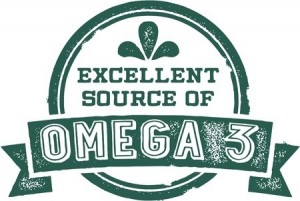OMEGA WHAT?
- March 3, 2015
- no comments yet
 Omega is the 24th and last letter of the Greek alphabet. The literal definition of the word is “great O” (Great Oils), ō mega, mega meaning ‘great.’
Omega is the 24th and last letter of the Greek alphabet. The literal definition of the word is “great O” (Great Oils), ō mega, mega meaning ‘great.’It can be so confusing these days when trying to figure out how to eat more healthfully. As a general rule, I figure if I eat like my great-grandparents, I will be eating well. That pretty much means nothing processed and everything from scratch, which yes, is time-consuming. Nowadays with food science being touted constantly, we sometimes get confused as to why we should include certain foods into our diet. I know I do. One nutrition tip flung everywhere these days reminds us to get our omega-3s. Most people respond with “Omega –whats?” Here is a quick tutorial of what you need to know about Omega: It is a fatty acid. Ideally we want to eat the appropriate ratio of omega fats to get the maximum absorption and health benefits of these essential fatty acids. The ideal ratio of omega-6 to omega-3 fats is thought to be 1:1 of Omega-6s to omega-3s. Western diets are deficient in omega-3 fatty acids, and have excessive amounts of omega-6 fatty acids, which many believe can lead to negative health issues.
Hence the need for our supplementation of the omega 3’s. Some sources where you can get your omega-3s outside of supplements are: Sardines, anchovies, salmon,(and other wild fatty fish) walnuts, flaxseeds, to name only a few. Here are some ways that I include these foods into our daily diet. When making tuna fish or egg salad, I add some sardines. I put anchovies in pasta and other sauces where they go undetected. I sprinkle walnuts or ground flaxseeds on cereal, oatmeal or yogurt. Enjoy what you eat. But first, know what you eat. Cheers to mega health!
Filed in: Food and Health, Parents
Leave a Reply
You must be logged in to post a comment.